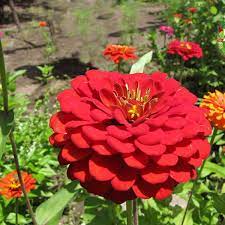**The Influence of Chrysanthemums on Tourism and Local Economy**

Chrysanthemums, with their vibrant colors and cultural significance, exert a considerable influence on tourism and the local economy. Let’s delve into how these flowers shape the tourism landscape and contribute to the economic development of local communities.
**1. Floral Tourism Attractions:**
Chrysanthemum gardens and festivals serve as popular tourist attractions, drawing visitors from far and wide to admire the beauty of these blooms. Cities and regions known for their chrysanthemum displays often experience an influx of tourists during peak blooming seasons. Tourists flock to botanical gardens, parks, and flower markets to witness the stunning arrays of chrysanthemums, contributing to the local tourism industry and generating revenue for businesses in the hospitality sector.
**2. Cultural Heritage and Festivals:**
Chrysanthemum festivals celebrate the cultural heritage and artistic traditions associated with these flowers. These annual events showcase intricate floral arrangements, cultural performances, and traditional crafts, providing tourists with immersive experiences into local customs and traditions. By promoting cultural exchange and appreciation, chrysanthemum festivals contribute to the preservation of intangible cultural heritage and foster pride and identity within local communities.
**3. Economic Stimulus and Job Creation:**
The cultivation and sale of chrysanthemums stimulate economic activity and create employment opportunities in rural and peri-urban areas. Local farmers and flower growers benefit from the demand for chrysanthemum cut flowers, potted plants, and decorative arrangements. Additionally, artisans and craftsmen involved in flower-related industries, such as floral design, event planning, and souvenir production, contribute to the local economy by leveraging the popularity of chrysanthemums for commercial purposes.
**4. Tourism Infrastructure Development:**
The popularity of chrysanthemum tourism drives investment in tourism infrastructure and amenities. Local governments and private stakeholders may develop gardens, parks, and cultural centers dedicated to chrysanthemums to enhance visitor experiences and attract tourism revenue. Infrastructure projects such as transportation networks, accommodation facilities, and visitor services cater to the needs of tourists, supporting sustainable tourism development and economic growth in the region.
**5. Marketing and Promotion:**
Chrysanthemums serve as iconic symbols in destination marketing campaigns, promoting tourism and cultural exchange. Marketing initiatives highlight the unique attractions and experiences associated with chrysanthemum destinations, enticing travelers to explore the beauty and charm of these locales. Through targeted promotion and branding efforts, chrysanthemum-rich regions position themselves as premier tourist destinations, driving visitor arrivals and boosting local economies.
**Conclusion:**
Chrysanthemums play a pivotal role in shaping tourism experiences and driving economic development at the local level. As symbols of beauty, cultural heritage, and economic prosperity, these flowers attract tourists, stimulate economic activity, and contribute to the sustainable growth of tourism destinations. By leveraging the allure of chrysanthemums, communities can harness the potential of floral tourism to enhance livelihoods, preserve cultural traditions, and create lasting positive impacts on local economies.
**Part 2: The Impact of Chrysanthemums on Tourism and Local Economy**
Chrysanthemums, with their captivating beauty and cultural significance, exert a profound influence on tourism and the local economy. Let’s explore how these flowers continue to shape tourism trends and contribute to economic sustainability in local communities.
**6. Diversification of Tourism Offerings:**
Chrysanthemum-themed tourism diversifies destination offerings, attracting visitors interested in botanical attractions and cultural experiences. Beyond traditional sightseeing spots, chrysanthemum gardens, exhibitions, and festivals provide unique opportunities for travelers to engage with nature and immerse themselves in local customs. The inclusion of chrysanthemum-related activities in tourism itineraries enhances destination appeal and encourages longer stays, benefiting local businesses and service providers.
**7. Rural Revitalization and Agritourism Development:**
Chrysanthemum cultivation serves as a catalyst for rural revitalization and agritourism development in agricultural regions. Farmers leverage chrysanthemum cultivation as a supplementary income source, capitalizing on agritourism initiatives such as farm tours, flower-picking experiences, and farm-to-table dining. These agritourism ventures inject vitality into rural economies, preserve agricultural heritage, and promote sustainable land use practices, fostering resilience and prosperity in rural communities.
**8. Artisanal Crafts and Souvenir Industries:**
Chrysanthemum-themed handicrafts and souvenirs contribute to the local economy by showcasing artisanal skills and cultural heritage. Local artisans craft a wide range of products inspired by chrysanthemums, including pottery, textiles, jewelry, and artwork, which serve as unique mementos for tourists. The sale of chrysanthemum-themed souvenirs generates revenue for artisans and supports the preservation of traditional crafts, adding value to the tourism experience and fostering cultural exchange.
**9. Community Engagement and Social Cohesion:**
Chrysanthemum-related tourism initiatives foster community engagement and social cohesion among residents. Local residents actively participate in the planning and organization of chrysanthemum festivals, volunteering as guides, performers, and event coordinators. The collective effort strengthens community bonds, instills a sense of pride and ownership, and promotes cultural inclusivity and tolerance. Through collaborative partnerships between residents, businesses, and local authorities, chrysanthemum tourism contributes to the social fabric of communities and enhances quality of life.
**10. Sustainability and Environmental Stewardship:**
Chrysanthemum tourism advocates for sustainable practices and environmental stewardship to safeguard natural resources and protect biodiversity. Destination management strategies prioritize ecotourism principles, emphasizing conservation, waste reduction, and eco-friendly transportation options. By adopting sustainable tourism practices, chrysanthemum destinations mitigate environmental impacts, preserve scenic landscapes, and ensure the long-term viability of tourism resources for future generations.
**Conclusion:**
Chrysanthemums serve as powerful catalysts for tourism development and economic prosperity in local communities. Through their intrinsic beauty, cultural significance, and economic value, these flowers inspire tourism experiences, drive economic growth, and promote sustainable development practices. By harnessing the allure of chrysanthemums, destinations can create inclusive and resilient tourism economies that benefit residents, visitors, and the environment alike.

